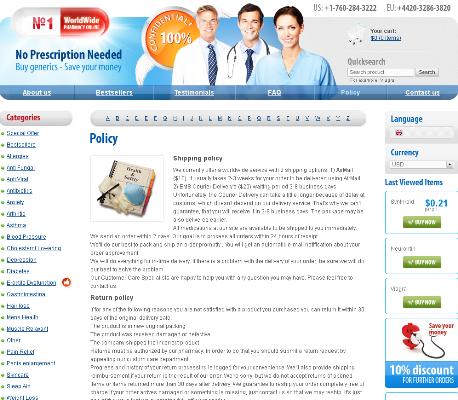Overview of Zofran and Its Uses
Zofran, also known by its trade name Ondansetron, has emerged as a go-to medication for combating nausea and vomiting, particularly in patients undergoing chemotherapy or radiation, as well as those recovering from surgery. Prescribed often via an Rx, Zofran works by blocking the actions of chemicals in the body that can trigger nausea and vomiting. Its easy availability in various forms, like tablets and oral solutions, makes it convenient for a broad patient demographic.
Table 1: Zofran Usage Scenarios
| Scenario | Common Use |
|---|---|
| Chemotherapy | Prevents nausea and vomiting |
| Radiation Therapy | Manages emetic episodes |
| Post-Surgery | Aids in recovery by reducing nausea |
Given its efficacy, this 'Happy Pill' often finds itself part of a 'cocktail' of medications tailored to patient needs, making it a staple in medical protocols. The seamless integration into treatment regimens, thanks to its varied forms and proven track record, underscores its critical role in modern medicine.
Key Ingredients and Mechanisms of Action

Zofran's active ingredient, ondansetron, works by blocking the actions of chemicals in the body that can trigger nausea and vomiting. It primarily targets serotonin receptors, specifically the 5-HT3 receptors, which are involved in the vomiting reflex. Ondansetron's targeted mechanism allows it to mitigate nausea efficiently in patients undergoing chemotherapy, radiation therapy, or surgery.
In contrast, some other antiemetics, like metoclopramide, function by enhancing the movements or contractions of the stomach and intestines, facilitating faster emptying and reducing nausea. On the other hand, drugs like promethazine function as antihistamines, impacting a broad range of receptors and side effects.
Ondansetron's focused action on serotonin receptors makes it highly effective, reducing the need for 'cocktail' approaches that combine multiple drugs. Such precision in its pharmacological pathway means patients often experience fewer side effects, enabling better compliance with the 'script' prescribed.
Efficacy: Zofran Compared to Other Antiemetics
When comparing zofran to other antiemetics, it consistently stands out due to its rapid onset of action and overall effectiveness. Many patients report significant relief from nausea much faster, often prompting doctors to write a script for zofran over other medications. Clinical studies further support these experiences, demonstrating superior efficacy in preventing both acute and delayed nausea, especially in chemotherapy patients.
In various head-to-head trials, zofran has shown higher patient satisfaction rates and lower instances of treatment failure. While some antiemetics require combination therapies or "comp" solutions to achieve similar results, zofran often proves effective on its own. This makes it a preferred choice in many clinical settings.
Despite its high efficacy, each patient's experience can vary. This variability highlights the importance of personalized treatment plans. However, the robust results from numerous studies suggest that for a considerable number of patients, zofran provides reliable relief, making it a staple in antiemetic protocols.
Side Effects and Safety Profiles Explored

When comparing the side effects of Zofran to other antiemetics, one must consider both common and rare reactions. Zofran has a well-documented profile, including headache, constipation, and sometimes a slight drowsiness—mild compared to its counterparts. However, occasional serious risks such as QT prolongation, or heart rhythm changes, merit attention. Safety caps are essential for keeping this and other meds out of reach from children, ensuring a secure household. Physicians must vigilantly monitor patients, especially when prescribed as part of a cocktail of medications. Clinical vigilance makes managing these risks feasible for better patient outcomes.
Cost Comparison: Zofran Versus Its Competitors
When comparing the cost of Zofran to its competitors, it's evident that Zofran often commands a higher price, possibly resulting in label sticker shock for many. While it's a reliable Script for nausea, generics like ondansetron can offer significant savings. For instance, a 30-pill supply of generic ondansetron typically costs a fraction of Zofran's price, which can be a game-changer for insurance reject situations.
Patients who experience sticker shock at the Drive-Thru often look for ways to reduce the cost of their prescriptions. Sig states that exploring options like therapeutic substitution or discussing generic alternatives can be beneficial. Moreover, consumer reports indicate that switching from Zofran to its generics can reduce the overall Pill Burden not just in terms of medication, but financial strain as well.
Clinical and patient feedback also underscore the economic advantage of considering generics. While Zofran remains a trusted antiemetic, generics can provide comparable efficacy at a reduced cost. Pharm Techs often recommend performing a Meds Check to evaluate opportunities for cost savings, reaffirming that generics can bridge the efficacy-to-cost gap effectively.
| Medication | Type | Cost (30 pills) |
|---|---|---|
| Zofran | Brand | High |
| Ondansetron | Generic | Low |
Patient Experiences and Clinical Studies Analysis
Patient reviews and clinical studies offer a comprehensive look at how Zofran holds up in real-world settings. Among patients, Zofran is often praised for its quick action and reliability in controlling nausea and vomiting. This is especially crucial for individuals undergoing chemotherapy who need relief stat. However, it’s important to note that while many appreciate the effectiveness, some report side effects like headaches or constipation.
Clinical studies support these findings, showing that Zofran is highly effective, yet not without its challenges. For instance, in comparison to generics, Zofran’s brand formulations seemed to have fewer occurrences of ‘ghost tablets,’ highlighting better absorption. But, other antiemetics like Compazine also have their loyal following for different efficacy and side effect profiles.
Patient narratives and clinical data both underline the significance of tailored treatment. Different people respond uniquely to each medication, stressing the importance of a consultative approach. When prescriptions and directions (Sig) include consideration of past experiences and specific needs, the chances of optimal outcomes increase significantly.



